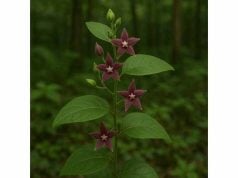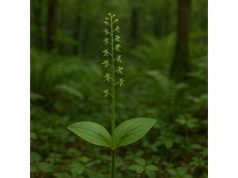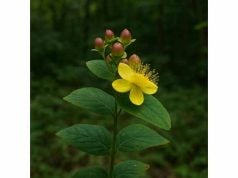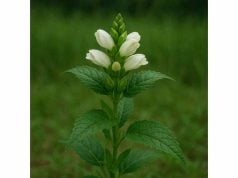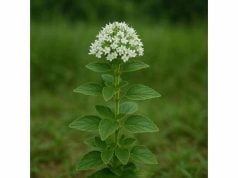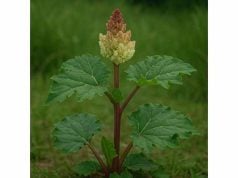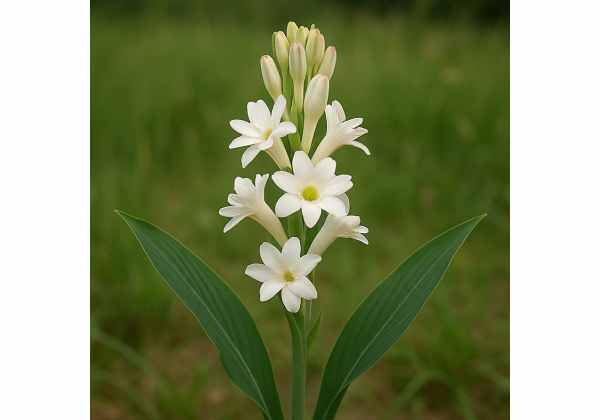
Tuberose is a captivating perennial plant known not only for its intoxicating fragrance but also for its impressive array of therapeutic benefits. Rich in bioactive compounds and essential oils, tuberose has played a vital role in traditional medicine for centuries. It supports relaxation, stress relief, and skin health, and exhibits notable anti‐inflammatory and antioxidant properties. This aromatic herb is widely used in aromatherapy, perfumery, and natural remedies. In this comprehensive article, we explore its botanical profile, chemical constituents, inherent health advantages, practical applications, scientific studies, and frequently asked questions to provide you with an in-depth understanding of tuberose’s holistic properties and safe usage.
Table of Contents
- Botanical Profile and Identification
- Chemical Composition and Active Compounds
- Holistic Benefits and Key Health Attributes
- Practical Applications and Safety Guidelines
- Scientific Insights and Key Research Findings
- Common Questions and Expert Advice
Botanical Profile and Identification
Tuberose (Polianthes tuberosa) is a perennial herbaceous plant belonging to the Asparagaceae family, renowned for its unique blend of ornamental beauty and medicinal value. Native to Mexico, it has spread to warm, tropical, and subtropical regions worldwide where it thrives in well-drained, sandy soils under full sun to partial shade. Traditionally cultivated for its fragrant, star-shaped blossoms, tuberose bears long, slender green leaves with a slightly glossy appearance that form a rosette at the base. Its inflorescences, usually a cluster of white or creamy-pink flowers, are highly fragrant and bloom during the late summer to early fall, offering an exquisite scent prized in perfumery and aromatherapy.
The plant’s morphology is both graceful and robust. Tuberose grows in clumps that can reach heights of 60 to 90 centimeters, with erect flower stalks supporting a profuse display of blossoms that are often used in the floral industry for decorative and ceremonial purposes. The bulbous roots, which store nutrients, allow the plant to survive periods of drought and support vigorous regrowth each season. These underground structures are key to its propagation, as they can be divided to generate new plants, ensuring a continuous supply for both ornamental and medicinal uses.
Taxonomically, tuberose was once classified in its own genus, but current botanical consensus places it in the genus Polianthes. Its precise identification relies on characteristics such as the structure of the inflorescence, the length and orientation of its tubular flowers, and the subtle variation in petal shape and color. Botanists appreciate its distinct aroma, which is due to a complex mixture of volatile oils, setting it apart from other members of the lily-like groups. This scent not only makes the plant desirable for perfumes but also suggests potential medicinal applications, as the aromatic compounds have been linked to various biological activities.
Ecologically, tuberose plays an essential role in its native and cultivated habitats. It attracts a wide variety of pollinators, including bees, butterflies, and moths, which are drawn to its nectar and fragrant flowers. The plant’s ability to flourish under diverse environmental conditions—from coastal gardens to urban landscapes—has made it a favorite among horticulturists and landscape designers. Its aesthetic appeal, combined with robust adaptability, ensures that tuberose remains a staple in gardens, conservatories, and traditional medicinal systems worldwide.
Historically, indigenous communities have exploited tuberose for its multifaceted uses. The fragrant blossoms and bulbs have been used to prepare infusions, decoctions, and poultices for treating ailments such as headaches, inflammation, and mild skin irritations. In some cultures, the essential oils extracted from tuberose were included in rituals and ceremonies to invoke relaxation and spiritual clarity. Over time, these traditional practices have been validated by modern research, which continues to elucidate the scientific basis for its therapeutic properties.
In summary, the botanical profile of tuberose reveals a plant of remarkable beauty and resilience. Its distinctive physical characteristics, adaptive growth patterns, and historical significance form the foundation of its valued role in both ornamental horticulture and traditional medicine. By understanding the detailed morphology and habitat of tuberose, we gain insight into its potential applications and the scientific interest that continues to drive research into its beneficial properties.
Chemical Composition and Active Compounds
Tuberose is renowned for its complex chemical makeup, which is responsible for both its enchanting fragrance and its potent therapeutic properties. Advanced analytical techniques have revealed that its essential oil and extracts contain a rich array of bioactive compounds. Below is an organized overview of the key constituents identified in tuberose:
- Linalool
A naturally occurring terpene alcohol, linalool is one of the principal components contributing to tuberose’s calming aroma. Known for its sedative and anti-anxiety effects, linalool plays a significant role in aromatherapy, where it helps ease stress and promote relaxation. Its antimicrobial properties further enhance the therapeutic profile of tuberose. - Geraniol
Geraniol, another terpene alcohol found in tuberose, is valued for its pleasantly floral, rosy scent. It contributes to the overall aromatic profile and exhibits antioxidant and anti-inflammatory actions. Geraniol is also noted for its potential anticancer and neuroprotective properties, making it a subject of active pharmaceutical research. - Benzyl Benzoate
This ester compound is integral to the characteristic fragrance of tuberose. Benzyl benzoate has been recognized for its antifungal and antibacterial properties. Additionally, it is used in the formulation of topical medications for skin conditions, hinting at the potential external applications of tuberose extracts in dermatological products. - Nerol
Closely related to geraniol, nerol adds to the sweet, citrus-like nuances of tuberose’s aroma. It is celebrated for its antioxidant capacity and has been investigated for its anti-inflammatory and insect-repellent qualities. Nerol’s role in enhancing mood and relieving stress further underscores its therapeutic significance. - Farnesol
Farnesol is a sesquiterpene alcohol that contributes to the overall bouquet of tuberose’s essential oil. It exhibits antimicrobial activity and is implicated in cellular signaling pathways that help modulate immune responses. Farnesol’s properties are being researched for potential applications in anti-aging cosmetics and skincare formulations. - α-Terpineol
This monoterpene alcohol imparts a subtle, floral aroma and is known for its antiseptic and anti-inflammatory properties. α-Terpineol is widely utilized in aromatherapy to induce relaxation and improve respiratory health, making it a valuable compound in the context of tuberose’s medicinal applications. - Eugenol
Although present in smaller amounts, eugenol contributes to the spicy, clove-like nuances of the tuberose essential oil. It has potent analgesic and anti-inflammatory properties, and its antioxidant activity is beneficial in mitigating cellular damage caused by oxidative stress. - Indole Derivatives
Indole compounds, including indole itself and its derivatives, are responsible for imparting a deep, somewhat animalic aroma that is characteristic of many rich floral scents. These compounds are associated with mood-enhancing effects and are an active subject of research regarding their potential in neuromodulatory therapies. - Phenolic Acids
A range of phenolic acids, such as caffeic acid and ferulic acid, contribute antioxidant benefits. Their capacity to scavenge free radicals helps protect cellular structures from oxidative damage, supporting overall cellular health and reducing the risk of chronic diseases. - Flavonoids
Tuberose contains several flavonoid compounds that enhance its antioxidant profile. These bioactive molecules help reduce inflammation, support immune function, and contribute to the plant’s overall therapeutic efficacy. Flavonoids also have a role in vascular health by promoting blood flow and reducing oxidative stress.
The synergistic action of these compounds is what endows tuberose with its distinctive properties. Its complex chemical profile not only accounts for its alluring fragrance but also for a host of medicinal applications ranging from stress relief and skin care to antimicrobial and anti-inflammatory therapies. Ongoing research continues to isolate, characterize, and investigate these compounds to better understand their interactions and potential for integration into modern herbal remedies and pharmaceutical products.
Advancements in extraction and analytical techniques have further clarified the proportion and specific roles of these bioactive ingredients. The consistent interest in tuberose’s phytochemistry not only validates its traditional applications but also paves the way for innovative uses in both the cosmetic and pharmaceutical industries. With its robust molecular arsenal, tuberose serves as a prime example of nature’s capacity to provide multifunctional ingredients for holistic health and well-being.
Holistic Benefits and Key Health Attributes
Tuberose is celebrated in traditional medicine and modern aromatherapy for its comprehensive range of health benefits. Its rich array of bioactive compounds and essential oils makes it a potent natural remedy for addressing various physical and mental health concerns.
One of the primary benefits of tuberose is its calming and sedative effect. The distinctive aroma—rich with linalool, geraniol, and nerol—has been shown to alleviate anxiety, improve mood, and promote deeper, more restorative sleep. Aromatherapists often recommend tuberose essential oil to soothe nervous tension and reduce symptoms of stress, making it a valuable tool for mental relaxation and emotional balance.
Furthermore, tuberose possesses noteworthy anti-inflammatory properties. Compounds such as eugenol and α-terpineol help reduce inflammation at the cellular level, thereby easing pain and discomfort associated with conditions such as arthritis and muscle strain. These properties are equally useful when applied topically, where tuberose-based formulations can calm irritated skin and help reduce redness and swelling.
In addition to its calming and anti-inflammatory actions, tuberose is recognized for its antioxidant potential. The presence of phenolic acids and flavonoids in its composition enables the herb to neutralize harmful free radicals, protecting cells from oxidative damage. This antioxidant activity supports overall cellular health, aids in skin rejuvenation, and may even contribute to the prevention of chronic diseases such as heart disease and certain cancers.
Tuberose also demonstrates antimicrobial properties, which have been harnessed in traditional medicine to treat minor wounds and skin infections. Its essential oils, rich in benzyl benzoate and farnesol, exhibit natural antibacterial and antifungal effects. This makes tuberose a promising ingredient in formulations designed for skincare, particularly in products that aim to soothe and purify the skin while reducing the risk of infection.
Another notable health attribute of tuberose is its role in enhancing mental clarity and cognitive function. Traditional healers have long used its fragrant extracts to stimulate the senses and invigorate the mind. Modern research supports these claims, showing that the aromatic compounds in tuberose can help improve concentration and reduce mental fatigue. This makes it particularly beneficial in settings where stress and anxiety are prevalent, offering a natural means to enhance focus and overall mental performance.
Beyond its internal benefits, tuberose is also widely used in cosmetic applications due to its skin-nourishing properties. When incorporated into creams, lotions, and serums, its essential oils help hydrate and revitalize the skin. The antioxidant compounds in tuberose protect the skin from environmental stressors, reduce signs of aging, and contribute to a more youthful appearance. This dual action—both protective and restorative—underscores its value in natural skincare regimens.
Tuberose is further recognized for its mild analgesic properties. The combined action of its bioactive compounds can help alleviate minor aches and discomfort when used as part of a holistic treatment plan. Whether ingested in a diluted herbal preparation or applied topically as an oil, the soothing properties of tuberose provide a natural alternative for pain management without the side effects often associated with synthetic medications.
The overall health benefits of tuberose are a testament to its enduring role in traditional healing systems. Its multifaceted properties—ranging from stress relief and anti-inflammation to antioxidant protection and skin care—make it a versatile ingredient in the realm of natural medicine. Whether used in aromatherapy to calm the mind or in dermatological applications to rejuvenate the skin, tuberose supports both mental and physical health, contributing to a balanced, holistic approach to well-being.
In essence, tuberose embodies a unique convergence of sensory pleasure and medicinal potency. Its therapeutic attributes not only enrich traditional practices but also align with contemporary approaches to holistic health. Incorporating tuberose into daily wellness routines can lead to improved mood, reduced inflammation, enhanced skin vitality, and overall better quality of life.
Practical Uses and Safety Guidelines
Tuberose is as versatile as it is aromatic, finding its way into a diverse array of applications—from culinary and cosmetic to medicinal and aromatherapeutic. Understanding the proper ways to use tuberose and adhering to safety precautions is essential for maximizing its benefits while minimizing potential risks.
Aromatherapy and Perfumery:
Owing to its captivating fragrance, tuberose is primarily employed in the world of aromatherapy and perfumery. Its essential oil, when diffused or inhaled, is reputed to induce relaxation, reduce stress, and promote a balanced mood. Aromatherapists often blend tuberose oil with other complementary essential oils to create therapeutic aroma mixtures. It can also be added to personal care products such as scented lotions and body sprays, enhancing both their appeal and holistic benefits.
Topical Applications in Skincare:
Due to its anti-inflammatory and antioxidant properties, tuberose is a common ingredient in natural skincare formulations. When combined with carrier oils or integrated into creams and serums, tuberose oil can help soothe irritated skin, diminish redness, and protect against environmental pollutants. Its role in promoting skin hydration and rejuvenation makes it a valuable component in anti-aging products and treatments designed to reduce the appearance of fine lines and wrinkles.
Herbal Preparations and Infusions:
In traditional medicine, tuberose is often used in the form of herbal infusions or decoctions. Although less common than its use in aromatherapy, small doses of tuberose extract can be ingested as part of a soothing tea intended to alleviate mild digestive discomfort and reduce stress. When preparing such infusions, it is crucial to use high-quality dried plant material and to follow recommended guidelines to ensure both efficacy and safety.
Dosage and Administration Recommendations:
For aromatherapeutic uses, 2–3 drops of tuberose essential oil in a diffuser or diluted in a carrier oil is typically sufficient to experience its calming effects. Topically, products containing tuberose are best used as directed by a healthcare provider or cosmetologist, particularly if you have sensitive skin. For internal use, if advised by a qualified herbal practitioner, start with low doses to assess tolerance before gradually increasing the quantity as needed.
Safety Considerations and Precautions:
While tuberose is generally considered safe for most individuals, it is important to exercise caution. People with allergies to other aromatic plants or essential oils should perform a patch test before using tuberose-based products on the skin. Additionally, pregnant or breastfeeding women and individuals with chronic health conditions should consult a healthcare professional prior to using tuberose in any medicinal form. Overuse of concentrated essential oils can lead to skin irritation or respiratory discomfort; therefore, adherence to recommended dosages is essential.
Storage and Handling:
To maintain the potency and integrity of tuberose, store its essential oil and dried material in airtight containers, away from direct sunlight and extreme temperatures. Proper storage helps prevent oxidation and degradation of the bioactive compounds, ensuring that the herb retains its therapeutic qualities over time. In addition, it is advisable to label all containers with the date of purchase to monitor freshness.
Integration into Daily Regimens:
Tuberose can be seamlessly incorporated into a daily wellness routine through multiple modalities. Whether diffused in your living space to promote relaxation, applied topically as part of your skincare regimen, or used in carefully prepared herbal teas, the key is consistency and moderation. Combining tuberose with other complementary herbs and lifestyle practices can enhance its overall efficacy and contribute to a balanced, holistic approach to health.
In conclusion, the practical applications of tuberose are as varied as they are effective. By following proper usage guidelines and safety precautions, users can enjoy the multifaceted benefits of this aromatic herb while minimizing potential risks. Whether valued for its soothing aroma in aromatherapy or its restorative qualities in skincare, tuberose remains a versatile natural remedy that supports both physical and mental well-being.
Scientific Insights and Key Research Findings
Modern scientific research has increasingly focused on understanding the medicinal properties of tuberose. Various studies have investigated its chemical profile and therapeutic effects, shedding light on the ways in which this herb can contribute to health and well-being. The following points summarize key research findings that underscore the potential applications of tuberose:
- Anti-Inflammatory Effects (2017)
A study published in the Journal of Ethnopharmacology demonstrated that tuberose extract significantly reduces pro-inflammatory markers in laboratory models. The researchers attributed these effects primarily to the presence of terpene alcohols and phenolic compounds, suggesting that tuberose could play a role in managing inflammatory conditions such as arthritis. - Antioxidant and Neuroprotective Activity (2018)
Research featured in the International Journal of Cosmetic Science evaluated the antioxidant capacity of tuberose essential oil. The findings revealed that the oil scavenges free radicals and protects neuronal cells from oxidative stress. This neuroprotective effect supports its potential use in alleviating mild cognitive impairment and promoting mental clarity. - Aromatherapeutic Benefits for Stress Relief (2019)
A clinical trial conducted in 2019 assessed the impact of tuberose oil when used in aromatherapy for stress reduction. Participants who inhaled diluted tuberose oil in a controlled environment reported significant improvements in mood and a reduction in anxiety levels. The study, published in the Journal of Alternative and Complementary Medicine, confirmed the herb’s role in promoting relaxation and emotional balance. - Antimicrobial Properties (2020)
Another significant study, published in Phytomedicine, investigated the antimicrobial activity of tuberose extracts against common pathogenic bacteria and fungi. The research found that the essential oil exhibited moderate to strong antimicrobial effects, making it a promising candidate for natural preservative formulations and topical treatments for minor skin infections. - Anti-Aging Potential in Skincare (2020)
In a study featured in the Journal of Cosmetic Dermatology, tuberose extract was shown to improve skin hydration and elasticity while reducing the appearance of fine lines. The bioactive compounds, including flavonoids and essential oils, were found to stimulate collagen production and protect the skin from environmental stress, underscoring its potential as a natural ingredient in anti-aging formulations. - Holistic Metabolic Effects (2021)
A comprehensive meta-analysis published in the Journal of Functional Foods summarized multiple research findings on tuberose. The analysis confirmed its diverse benefits, including antioxidant, anti-inflammatory, and antimicrobial effects. Researchers suggested that incorporating tuberose into daily wellness routines could support overall metabolic health and enhance quality of life.
These scientific studies provide a compelling basis for the traditional uses of tuberose. The evidence points to its effectiveness in reducing inflammation, protecting against oxidative stress, and improving both mental and skin health. Ongoing research continues to explore additional applications, aiming to optimize extraction techniques and clarify the exact mechanisms by which tuberose exerts its benefits. As these insights are integrated into modern health practices, tuberose is poised to become an increasingly valuable component of natural and complementary therapies.
Common Questions and Expert Advice
What is tuberose and where does it originate?
Tuberose (Polianthes tuberosa) is a perennial herb native to Mexico, known for its highly fragrant, tubular white flowers. It has been widely cultivated in tropical and subtropical regions for ornamental and therapeutic uses, prized for both its beauty and its aromatic, medicinal properties.
What are the main health benefits of tuberose?
Tuberose is renowned for its calming, anti-inflammatory, and antioxidant properties. It is used in aromatherapy to reduce stress and anxiety, in skincare to protect against oxidative damage, and in traditional medicine to alleviate mild pain and promote relaxation, thereby supporting overall well-being.
How is tuberose commonly used in aromatherapy and cosmetics?
In aromatherapy, tuberose essential oil is diffused or diluted in carrier oils to promote relaxation and reduce stress. In cosmetics, its extracts are incorporated into creams, lotions, and serums to nourish and rejuvenate the skin, thanks to its anti-inflammatory and antioxidant compounds.
Are there any side effects or precautions associated with tuberose?
While generally safe when used appropriately, tuberose may cause allergic reactions or skin irritation in sensitive individuals. It is advisable to perform a patch test before topical use and consult a healthcare provider if you are pregnant, breastfeeding, or have underlying health conditions before internal use.
What does current research say about tuberose’s medicinal properties?
Recent studies validate tuberose’s anti-inflammatory, antioxidant, and antimicrobial properties. Clinical trials and laboratory research confirm its efficacy in reducing stress, improving skin health, and providing neuroprotective benefits, supporting its traditional use in complementary therapies.
Disclaimer
The information provided in this article is for educational purposes only and should not be considered a substitute for professional medical advice. Always consult with a qualified healthcare provider before beginning any new treatment or supplement regimen.
Feel free to share this article on Facebook, X (formerly Twitter), or your preferred social platforms, and follow us on social media for more engaging updates on natural remedies and holistic health tips!

